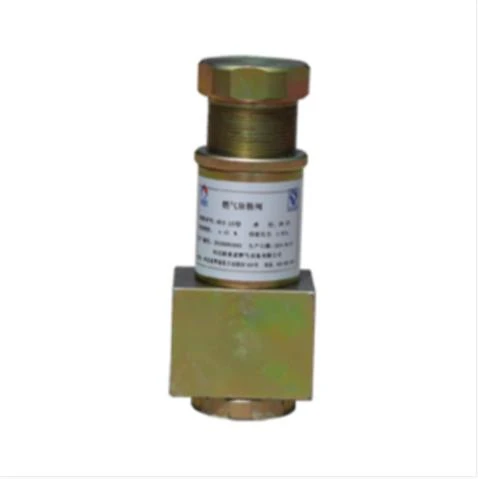
Dec . 11, 2024 09:25
Back to list
Air Control Valve Function and Applications in Modern Systems
Understanding Air Valves An Essential Component in Pneumatic Systems
Air valves, also known as pneumatic valves, play a vital role in various industrial applications, particularly in systems that rely on compressed air. These valves are essential for controlling the flow of air, ensuring efficiency, safety, and reliability in operations. In this article, we will delve into the workings, types, and applications of air valves, highlighting their significance in modern technology.
What is an Air Valve?
An air valve is a mechanical device that regulates the flow of air in pneumatic systems. Its primary function is to open or close air pathways, allowing or restricting airflow based on system requirements. Air valves can be operated manually or automatically, and they can be integrated with electronic controls to enhance precision and performance.
The mechanisms behind these valves can vary, with common types including solenoid-operated valves, pilot-operated valves, and manual valves. Each type has its specific applications, advantages, and limitations, making it essential to select the appropriate valve for a given task.
Types of Air Valves
1. Solenoid-Operated Valves These valves are controlled by an electromagnetic solenoid. When an electric current passes through the solenoid, it generates a magnetic field that moves a plunger, opening or closing the valve. Solenoid-operated valves are widely used in automated systems due to their quick response times and ease of integration with electronic controls.
.
3. Manual Valves As the name suggests, these valves are operated manually, typically with a lever or knob. While they may not provide the automation of solenoid or pilot-operated valves, manual valves offer simplicity and are often used in settings where manual control is preferred.
صمام هوائي

4. Check Valves These valves allow air to flow in only one direction, preventing backflow and ensuring system integrity. Check valves are crucial in pneumatic circuits to avoid damaging pressure surges and to maintain system efficiency.
5. Flow Control Valves These valves regulate the speed of actuators by controlling airflow. They are essential in applications where precise control of movement is required, such as in pneumatic cylinders that need to extend or retract at a specific rate.
Applications of Air Valves
Air valves are ubiquitous in various industries, including manufacturing, automotive, healthcare, and construction. Their applications are diverse, ranging from simple tasks like inflating tires to complex processes in automated assembly lines.
In manufacturing, air valves control pneumatic tools and machinery, significantly increasing productivity by allowing rapid and efficient movement. In the automotive industry, they are essential for systems such as air brakes and suspension control, ensuring vehicles operate safely and effectively.
In healthcare, air valves play a crucial role in respiratory equipment, where precise airflow regulation can impact patient therapy. Meanwhile, in construction, they are used in tools like pneumatic hammers and nail guns, enhancing the efficiency of workforce operations.
Conclusion
In conclusion, air valves are fundamental components of pneumatic systems, facilitating the control and management of airflow in various applications. Understanding their types and functions is crucial for anyone working in industries that utilize pneumatic technology. As innovations continue to advance the design and functionality of air valves, their importance in enhancing operational efficiency and safety will only grow. Proper selection, maintenance, and integration of these valves can lead to significant improvements in productivity and reliability across multiple fields.
Latest news
-
Safety Valve Spring-Loaded Design Overpressure ProtectionNewsJul.25,2025
-
Precision Voltage Regulator AC5 Accuracy Grade PerformanceNewsJul.25,2025
-
Natural Gas Pressure Regulating Skid Industrial Pipeline ApplicationsNewsJul.25,2025
-
Natural Gas Filter Stainless Steel Mesh Element DesignNewsJul.25,2025
-
Gas Pressure Regulator Valve Direct-Acting Spring-Loaded DesignNewsJul.25,2025
-
Decompression Equipment Multi-Stage Heat Exchange System DesignNewsJul.25,2025

